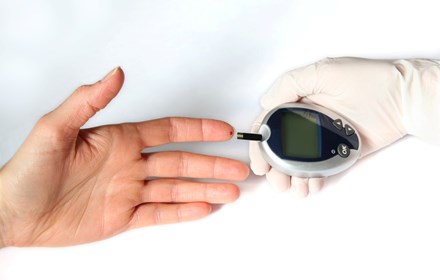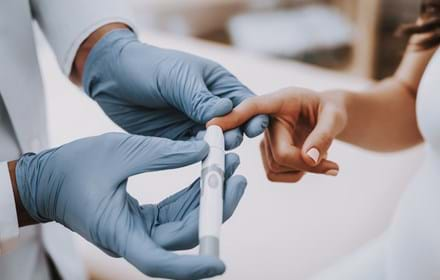
Lasers used to check blood flow in people living with type 2 diabetes
Foot circulation discovery could prevent more serious complications.
Researchers at Aston University in Birmingham have discovered a more accurate way of checking the blood flow in the feet of patients with type 2 diabetes.
Their findings have resulted in improved accuracy in detecting tiny changes in microcirculation – the smallest vessels within the circulatory system – by using laser technology.
People with type 2 diabetes can be at risk of foot amputations due to circulatory complications caused by their condition. The study found that changes in flow at this level could affect whether tissue lives or dies.
Originally developed in the late 1970s, light – or photonic – technology called laser Doppler flowmetry (LDF) is used to monitor blood-flow in the skin. This method relies on averages of blood flow and is therefore not always accurate.
However, for this latest study, Aston University researchers have suggested a new approach to process LDF light signals that is more precise.
The findings of the study were recently published in IEEE Transactions on Biomedical Engineering. In recognition of the innovation and importance of the developed approach, the editorial board of the journal selected the paper as a featured article in the field.

Currently, LDF measures the blood perfusion – a quantity proportional to an average volume of blood flowing through an average volume of tissue per an average unit time.
However, the new method separates the LDF signals allowing blood flow to be measured in a specific area of the vascular bed such as capillaries or veins.
Researchers said the proposed approach could have great potential to be incorporated in existing bedside and wearable LDF-based devices for the more advanced clinical diagnosis of blood flow and blood flow microcirculation.
The new approach underwent tests on both healthy volunteers and pilot clinical trials on diabetes patients by applying a probe to their skin. The new method showed a significant improvement in the diagnostic accuracy of detection of microvascular changes in the skin of the feet in patients with type 2 diabetes, as well as age-specific changes.
The research was led by Professor of mechanical, biomedical and design engineering, Igor Meglinski and Dr Viktor Dremen of Aston Institute of Photonic Technologies.
Professor Meglinski said: “We’re delighted to have found a more accurate method of blood flow diagnosis in skin that, we believe, can help people with diabetes.
“In the future this technique could pave the way for more precise imaging of blood flow in the brain and other biological tissues.”
Read the report in IEEE Transactions on Biomedical Engineering
Read the DRWF diabetes information leaflet How can diabetes affect my feet?
I would like to make a regular donation of
I would like to make a single donation of
There are lots of ways to raise money to support
people living with all forms of diabetes.
Bake, Swim, Cycle, Fly ... Do It For DRWF!
Fundraise with us
Recent News


